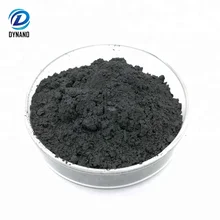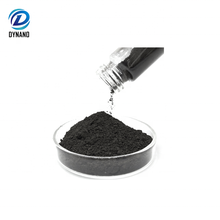Cobalt nanoparticles with different sizes and different morphologies were prepared by the method of liquid-phase chemical reduction with varying experimental conditions: the type of cobalt salts, the order of introduction of reagents, and the reaction temperature. The structure and morphology of the cobalt particles were characterized using X-ray powder diffraction and scanning electron microscopy. The influence of the size and morphology of cobalt particles on the thermal decomposition of ammonium perchlorate was studied by differential scanning calorimetric. Here is the report for Application of nano cobalt powder in different fields .
- Cobalt nanoparticles can be prepared for the chemical recovery process. The structure and morphology of cobalt particles were characterized using X-ray powder diffraction and scanning electron microscopy separately. The influence of the side effects and morphology of nanoparticles on topochemical processes on their surface is of actual both theoretical and practical interest.
- Among the large number of magnetic nano-materials, special attention attracts nano-cobalt. At present, its use is mainly associated with technologies for the production of high-density media. During the formation of metal nanoparticles, particles of spherical shape are preferably formed, which ensures minimum surface tension and allows them to achieve relative thermodynamic stability. Earlier, in the course of nano cobalt synthesis, particles of precisely spherical or close to spherical shape were obtained. In recent years, many studies have been carried out on the synthesis of cobalt nanocrystals of various morphologies.
Studies of cobalt nano-particles of complex shape as catalysts for the thermal decomposition of ammonium perchlorate have been carried out. Due to the choice of alcohol as the solvent for the method of liquid-phase chemical reduction, particles of different morphology, such as dendritic, snowflake-like and spherical, were obtained, and their catalytic effect on the thermal decomposition of APs differed significantly.

The main goal of this work was to synthesize cobalt nano-particles of various sizes and different morphologies using liquid-phase chemical reduction and to study the effect of experimental synthesis conditions on the structure, particle morphology, and their catalytic properties.
Preparation of Cobalt Nano-crystals
In the usual manner, aqueous solutions of cobalt salts with a certain concentration were prepared separately. Hydrated sodium citrate was added to these solutions at a molar ratio of sodium citrate to cobalt salt solutions of 1: 1. The mixed solution was mixed and heated at 60 ° C or 80 ° C in a water bath for 10 minutes, and then a small amount of NH2PO2 was added as a nucleation initiator. The pH of the solution was adjusted to about 12 by the addition of NOH (1 mol / L), and hydrazine hydrate as a reducing agent was added to the mixed solution. After the reaction, the gray-black precipitate formed from the solution was cooled to room temperature. Then the product was centrifuged, washed with distilled water and anhydrous ethyl alcohol, and dried in vacuum at 60 ° C for 12 h.
It can be seen that the shape of the cobalt particles also strongly influences the temperature of the maximum exothermic peak and the heat of thermal decomposition of the AP. Thus, cobalt particles in the form of chrysanthemum and leaflet showed a slightly higher catalytic efficiency during the decomposition of the AP. It can be assumed that this fact indicates the important role of both the magnitude and the accessibility of the surface of the additive particles for the decomposition products of the AP.

